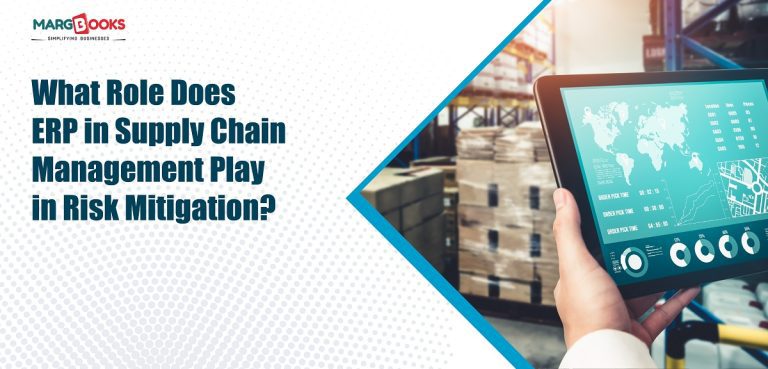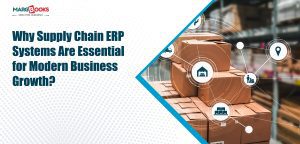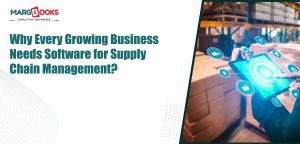Our organizations must operate with increased efficiency, transparency, and agility to meet growing customer expectations. One of the most effective tools that businesses are adopting to achieve this is ERP in supply chain management. Enterprise Resource Planning (ERP) systems are no longer just tools for accounting or inventory. They have evolved into powerful platforms that connect and streamline every aspect of a company’s supply chain.
What is ERP in Supply Chain Management?
Our ERP in supply chain management refers to the integration of ERP systems into the processes involved in managing the flow of goods, services, and information across the supply chain.
This includes everything from the procurement of raw materials to the delivery of finished products to customers. The key advantage of using ERP is its ability to centralize data and provide real-time insights across all supply chain functions.
By bringing together information from sales, procurement, inventory, logistics, and finance departments, ERP enables businesses to make more informed decisions, reduce waste, enhance coordination, and boost productivity.
Key Benefits of ERP in Supply Chain Management
Supply chains are becoming more complex, making it essential for businesses to stay in control of every link. ERP systems help unify operations, improve coordination, and create a single source of truth across departments.
1. Improved Visibility and Transparency
One of the primary reasons businesses adopt ERP in supply chain management is to gain end-to-end visibility across their supply chain. With real-time dashboards and automated reporting, decision-makers can monitor inventory levels with MargBooks, track shipments, and manage demand planning more effectively.
2. Advanced Inventory Management
ERP systems help businesses maintain optimal inventory levels by analyzing sales trends, forecasting demand, and triggering automated reorders. This reduces the chances of stockouts or overstock situations, both of which can significantly affect profitability.
3. Better Vendor and Procurement Management
An ERP system simplifies vendor management by maintaining a centralized database of suppliers, pricing, and purchase history. It streamlines the procurement process, ensures timely order placements, and helps negotiate better deals by providing insights into past purchase patterns.
4. Improved Customer Service
With ERP in supply chain management, businesses can respond faster to customer inquiries, track orders in real time, and ensure on-time deliveries. This leads to higher customer satisfaction and retention.
5. Increased Operational Efficiency
Automating repetitive tasks such as order processing, invoicing, and data entry reduces manual errors and saves time. ERP ensures all departments work in sync, minimizing delays and bottlenecks.
How ERP Integrates with Other Systems?
Modern ERP platforms are designed to integrate seamlessly with other business tools. For example, many companies use online billing software and accounting software to manage their financial operations. An integrated ERP system can automatically pull billing data, reconcile accounts, and generate financial reports with MargBooks software.
Such integrations eliminate data silos, increase cross-departmental collaboration, and ensure consistency across business functions.
ERP and Demand Forecasting
One of the critical challenges in supply chain management is demand forecasting. ERP systems utilize historical data and predictive analytics to estimate future demand accurately. This helps businesses plan their procurement, production, and logistics activities more effectively.
Accurate forecasting not only ensures that products are available when customers need them but also reduces holding costs and minimizes waste.
Real-Time Analytics and Reporting
Modern ERP systems come equipped with advanced analytics features that allow managers to monitor performance indicators such as order fulfillment rate, inventory turnover, supplier performance, and transportation costs with MargBooks software. These insights help identify inefficiencies and areas for improvement.
For example, if a particular vendor consistently delivers late, the ERP system can flag the issue and help the procurement team make informed decisions about vendor changes or contract renegotiation.
ERP in Supply Chain Risk Management
Global supply chains are vulnerable to various risks, including geopolitical tensions, natural disasters, and market fluctuations. ERP in supply chain management plays a vital role in risk mitigation by providing tools to monitor these risks proactively.
By tracking supplier performance, lead times, and demand changes, ERP helps companies develop contingency plans and stay resilient in the face of disruptions.
Implementation Considerations
While the benefits of ERP are substantial, successful implementation requires strategic planning. Businesses must select an ERP system that aligns with their specific supply chain needs and scale. It’s essential to involve stakeholders from various departments to ensure the system is tailored to their workflows.
Proper training, data migration, and change management are also critical components of a successful ERP rollout. Businesses should work closely with experienced ERP providers to ensure a smooth transition and maximize ROI.
Conclusion
The final ERP in supply chain management is a necessity for businesses aiming to stay competitive in a rapidly evolving marketplace. From improving inventory control to enhancing customer service and supporting real-time decision-making, ERP provides a complete solution for managing complex supply chains.
By integrating with essential tools, including online billing software and accounting software, ERP creates a unified platform that empowers businesses to operate more efficiently, reduce costs with MargBooks, and respond quickly to market demands.
As supply chains become more dynamic and global, investing in a full ERP system is one of the smartest moves a business can make to secure its future.




